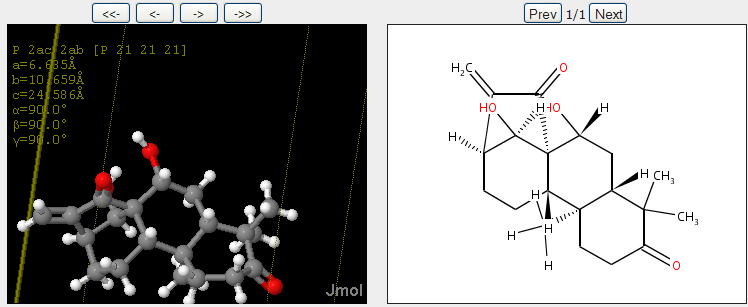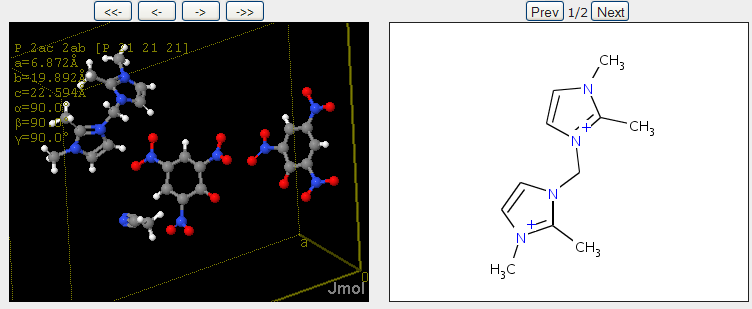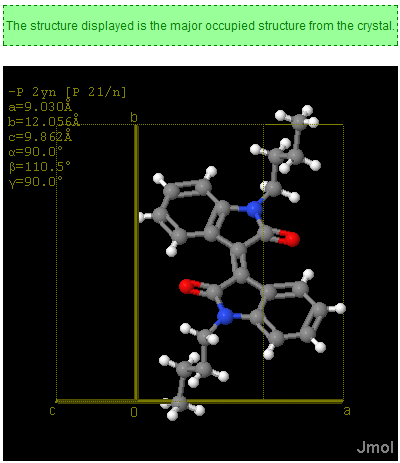In response to my post on the technical issues of CrystalEye, Egon has asked about InChIs (see Unofficial InChI FAQ):
Thanks Egon. This is an important and complex area. I’ll try to show some recent examples and make some suggestions. As I go through I am also noticing bugs…
(entry A) 10.1107/S1600536807043048 single molecule per asym unit. No problem:

InChI=1/C20H28O4/c1-10-11-5-6-12-19(4)8-7-14(21)18(2,3)13(19)9-15(22)20(12,16(10)23)17(11)24/h11-13,15,17,22,24H,1,5-9H2,2-4H3/t11-,12-,13+,15+,17+,19-,20-/m0/s1
(entry B) 10.1107/S160053680705338X.
one dication, two picrates and a solvent:

Nick has drawn the dication first, but the others are drawable by scrolling.
There is NO InChI for the complete molecule (I’m not sure if this is deliberate), but there IS an InChI for the dication under “Moities” as there also is for the solvent. (The anions are missing from the moities – this may be a CrystalEye bug or it may be an author problem). InChI for dication:
InChI=1/C11H18N4/c1-10-12(3)5-7-14(10)9-15-8-6-13(4)11(15)2/h5-8H,9H2,1-4H3/q+2
InChI for solvent (CH3CN):
InChI=1/C2H3N/c1-2-3/h1H3
(Nick: BUG. The picrates are in the complete CML file but they don’t have InChIs and they don’t appear in the pages)
(entry C) 10.1107/S160053680705009X
This structure has disorder, which always complicates the inpterpretation of the chemical structure (note the warning)

The InChI is calculated for the major component.
(Entry D) 10.1107/S1600536807048301 This contains two identical solvate molecules to one of solvent (dioxan). Because the solvent lies on a symmetry element it is recorded as A B(0.5) rather than A2.B though this is probably inconsistent

Note that this is also disordered.
The InChI here represents the compound molecule as A2.B
InChI=1/2C16H14N4O2.C4H8O2/c2*1-
11-19-16(22-20-11)15(9-17-10-18-21)14-8-4-6-12-5-2-3-7-13(12)14;1-2-6-4-3-5-1/h2*2-10,21H,1H3,(H,17,18);1-4H2/b2*15-9-;
In summary, therefore, I think we should certainly have InChIs for the moieties (and I think we have, at least in principle). I am less clear how useful it is for the overall crystal structure (as in D). Note that for inorganic structures without discrete moieties there are no InChIs. I am looking for some with discrete moieties.
That’s enough for now. I’ll tackle fragments in the new post or so.
November 4th, 2007 at 1:43 pm eRegarding the InChIs: I would prefer one InChI for each moiety, not one InChI for the full structure. Or not only, at least.